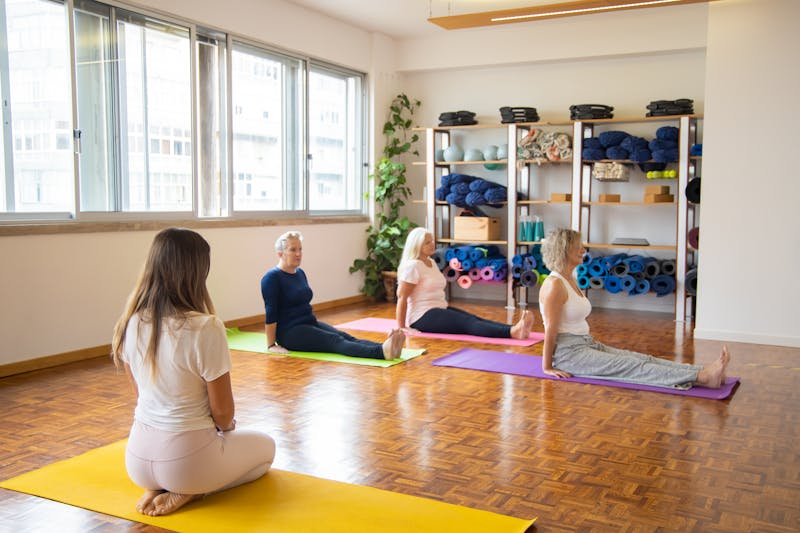It is crucial for our bodies to stay active and engage in physical activity, which is why it is important to plan ahead and prevent injuries that could negatively affect your ability to do so. Having a consistent level of activity can help prevent injuries, but it can also be hard to avoid them when things go wrong by mistake!
Most of the time, injuries that involve muscles can be caused by a variety of factors. For instance, if you are playing golf, you might injure your shoulder from a funky swing. On the other hand, if you are hiking, you might injure your calf muscle from the strain of walking. These injuries can happen to anyone, no matter who you are, and they can affect all parts of the body.
The appearance and symptoms of a muscle strain injury can vary depending on its severity. For instance, when one is hurt from a muscle strain in the neck, shoulders, hamstring, or lower back, you might experience slight dull pain or more of a stabbing sensation. After treatment, which can sometimes be sped up, most people are able to fully recover from a muscle sprain.
Importance of Wearing the Right Clothing When Dealing with a Muscle Strain Injury
Support garments, like compression wear, can reduce the risk of injury and help stabilize the joints and muscles. They can also minimize movement, which can prevent pain and soreness.
For optimal comfort and performance, it's important to wear clothes that are designed to wick away sweat and keep the body cool. The appropriate clothing should also allow for a full range of movement.
Support garments, such as compression wear, can help increase blood flow to the muscles and reduce the risk of injury. They can also help prevent soreness and fatigue, which can occur both after and during exercise.
Choosing the right clothes can have a huge impact on how you recover and experience your exercise after a muscle strain. Overall, it is important to find apparel that offers support, blood circulation, and comfort.

With GoalFive, you can feel rest assured that you will find workout attire that’ll fit the needs of your muscle sprain just fine. This women’s soccer tight option fits just right to improve blood flow and help minimize some of that soreness as soon as possible.
P.R.I.C.E.
The acronym P.R.I.C.E. refers to the phases of muscle injury recovery, including protection, rest, ice, compression, and elevation. It is important to remember to refer to this term during the healing process of most types of injuries. The three phases are proliferative, inflammatory, and remodelling.
Many people believe that inflammation is a damaging process that can be minimized with anti-inflammatory drugs, but this is not the case. It is actually a vital part of the healing process after an injury. During this phase, the body can remove damaged or dead tissue and start the process of creating new healthy tissue.
Unfortunately, the inflammatory phase can last for a long time due to the lack of exposure to the proper environment. This is why it is important to incorporate the concept of P.R.I.C.E. during the healing process, which can help the body to heal properly and allow it to start moving toward a more proactive activity.
One of the most important factors that people should consider when it comes to protecting their injured sites from further trauma is rest. This means that they should avoid putting themselves through pain and instead, rest their muscles properly. One of the most effective ways to reduce swelling and pain during the inflammatory phase is by applying ice.
Compression using a light tensor bandage can help decrease pain and inflammation, promote nutrient-rich circulation, and support a joint. Elevation can also be used to reduce swelling. For instance, if you have a lower leg injury, you can elevate your foot while lying on your back.
Cold compresses or ice can help speed up the recovery process for those who have strained muscles. However, you must avoid putting ice directly on the skin. Before you apply cold or ice, make sure to wrap the muscle with a towel. The effects of burning the skin with the ice crystals can prevent the muscle from recovering.

Low-Impact Exercise
Mobility and low-impact exercises can help speed up the recovery of muscles, allowing blood to flow freely in the affected area and delivering nutrients and oxygen to damaged tissue. Both methods also help prevent injury risk by relaxing the muscles.
Stretching can help improve the flexibility and discomfort of your muscles, and if you're unable to get out of bed, a massage chair might be helpful instead of having to stand. While recovering, avoid overstretching, which can lead to more muscle injuries. Consider consultations with physical therapy experts from massage therapy schools, who can craft a massage/acupuncture program tailored specifically to your needs and healing process.
Choose a non-stressing exercise that won't affect your injured muscle. For instance, swimming can help alleviate calf or ankle problems as it is the perfect light activity that doesn't put too much strain on the muscles overall.
Try These 3 Shoulder Stretches
Exercise 1
Exercise 2
Exercise 3
Consider Lifestyle Changes
Even if it's hard to change parts of your lifestyle, the benefits done for your health can contribute to a speedy injury recovery. High alcohol consumption and smoking are bad lifestyle habits that can lead to slower healing and inflammation. These habits might relieve symptoms in the moment, however, this can also prolong healing and increase likelihood of addiction.
When it comes to healing from a muscle injury, it's important to limit alcohol and tobacco consumption, as both can negatively affect the musculoskeletal system
It's important to avoid re-damaging your muscles while you're recovering. Minor injuries can be treated with the reduction of the amount of substances or frequency of their consumption.
Proper Nutrition is Vital
Although hydration and nutrition are important for optimum health and fitness, there's no single diet that can treat muscle injury. Instead, avoid processed and sugary food products as much as possible as they can hinder the body's healing process.
High protein diets can help speed up the recovery process after exercising or injury. When dealing with a muscle injury, it's important to increase your protein intake to stay healthy and avoid damaging the tissue. Even if you're not working out, it's still important to maintain a protein-rich diet.

Meet With a Physiotherapist
A professional physiotherapist can help guide your recovery from an injury by providing a comprehensive assessment and treatment plan. They can also provide education and support to help you manage your condition.
Having a well-designed treatment plan can help speed up the recovery time. Additional treatment sessions may be required to help the healing process move along, which will allow you to get back to doing the things that you enjoy quickly.
Find the right clothing, engage in light exercises, fuel your body right, and cut out bad lifestyle habits, and you’ll be on the right track to recovering and getting back to your best self in no time!




Leave a comment
This site is protected by hCaptcha and the hCaptcha Privacy Policy and Terms of Service apply.